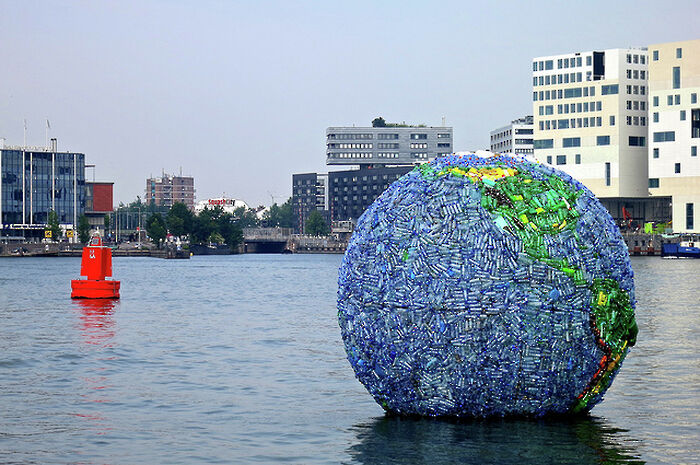Is fashion as we know it sustainable?
Fast fashion and environmental welfare seem to be diametrically opposed. Who is to blame and what needs to change?

News recently broke that Burberry has burned £30 million of excess stock to maintain exclusivity, rather than selling at a lower price. It reveals a level of negligence towards environmental issues in fashion which faces increasing resistance.
Trend is at the core of the fashion industry right now. What we buy is dictated by seasonal shows which set the patterns for shops.
The culture of fast fashion depends on our constantly evolving desires as well as en masse purchases to keep companies ticking over
The culture of fast fashion depends on our constantly evolving desires as well as en masse purchases to keep companies ticking over.
Because of it, we produce and discard products at a level which the planet can’t cope with, especially considering the rate of population growth. It’s a major drain on resources and a pollutant because of the energy required for raw materials. How can we make fashion more sustainable?
Some change is already underway, with certain brands beginning to pick on the need for change. Sustainable cotton initiatives in the UK have reduced water and carbon footprints by 7% and 8% respectively since 2012. These aims illustrate the impacts which active attempts can have in improving sustainability within the existing system.
Zara has bought into this initiative with their Join Life range, which uses recycled materials – a promising sign for such a big brand (and pleasing for me as a major fan).
In order for brands to change, what we ask of brands has to change
ASOS is probably the most progressive amongst mainstream brands, looking beyond just production – they recently signed into an initiative for circular economics, trying to create ways for their clothes to be reused and recycled.
Yet the issue remains that changing methods for sustainability is the more difficult option for companies, and therefore isn’t particularly appealing when people will buy their latest items anyway. The Join Life scheme is only 1.5% of all Zara production at the moment but if its demand increased, production would too.
To make the relationship between mainstream fashion and sustainability less dichotomous and make the changes we need, we have to shift our attitudes towards how we buy in a broader sense.
Fast fashion and sustainability will realistically only ever function together to a limited degree. In order for brands to change, what we ask of brands has to change.
Fast fashion is inherently incompatible with environmentalism because of the waste that it produces
Fast fashion is inherently incompatible with environmentalism because of the waste that it produces; on average 14 new items are produced for every living person on an annual basis. Creating a more sustainable industry would mean consumers committing to buying fewer pieces to keep for longer and therefore throwing clothes out less routinely, resulting in less demand for production.
Actually changing the way we shop is an unappealing step for a lot of people, especially because it can mean ignoring trends. Fashion has historically been seasonal, and stepping outside of that system completely is a major step.
Even if we want to, making the choice to shop sustainably is difficult because it means stepping outside of the system which trickles down to fast fashion brands
For a lot of us – I speak for myself at least – clothing is a matter of identity, and the choices we make regarding it can be more emotional than rational. Even if we want to, actually making the choice to shop sustainably is difficult because it means stepping outside of the system which dictates trends from fashion week and trickles down to fast fashion brands.
One of the biggest barriers for me when I try to shop sustainably is the price. Companies such as People Free or the H&M Conscious range are simply pricier than their alternatives. Spending more does fit with the idea of buying less, but if I need clothes for specific events, for example, I can’t normally afford to splurge. In that case, I tend to shop at charity shops instead.
Buying second hand is probably the easiest way to be relatively environmentally friendly on a budget. We’re lucky there are so many good places in Cambridge – my favourite is the Mill Road Oxfam – so it’s a pretty easy option to go for, and a fun way of not just shopping for current trends. Supporting growing ranges like Zara’s Join Life scheme, or smaller brands, is also a good option. They tend to balance trend pretty well with a level of sustainability and they can only improve from here.
The changes slowly happening in some major brands like ASOS, Topshop and Zara are promising. All of them are in some capacity pushing for sustainability. The only way to achieve this in a meaningful way is probably to move away from the seasonal principle of fast fashion altogether, instead buying fewer pieces or second hand pieces with greater longevity and donating what we don’t want. The changes they’re making mean shopping therefore can be environmentally sound, but only if we commit to creating less waste. It means breaking an entrenched set of patterns which dictate what and how we buy.
 News / Uni Scout and Guide Club affirms trans inclusion 12 December 2025
News / Uni Scout and Guide Club affirms trans inclusion 12 December 2025 News / Cambridge study finds students learn better with notes than AI13 December 2025
News / Cambridge study finds students learn better with notes than AI13 December 2025 News / Cambridge Vet School gets lifeline year to stay accredited28 November 2025
News / Cambridge Vet School gets lifeline year to stay accredited28 November 2025 Science / Did your ex trip on King’s Parade? The science behind the ‘ick’12 December 2025
Science / Did your ex trip on King’s Parade? The science behind the ‘ick’12 December 2025 News / Pembroke to convert listed office building into accom9 December 2025
News / Pembroke to convert listed office building into accom9 December 2025









